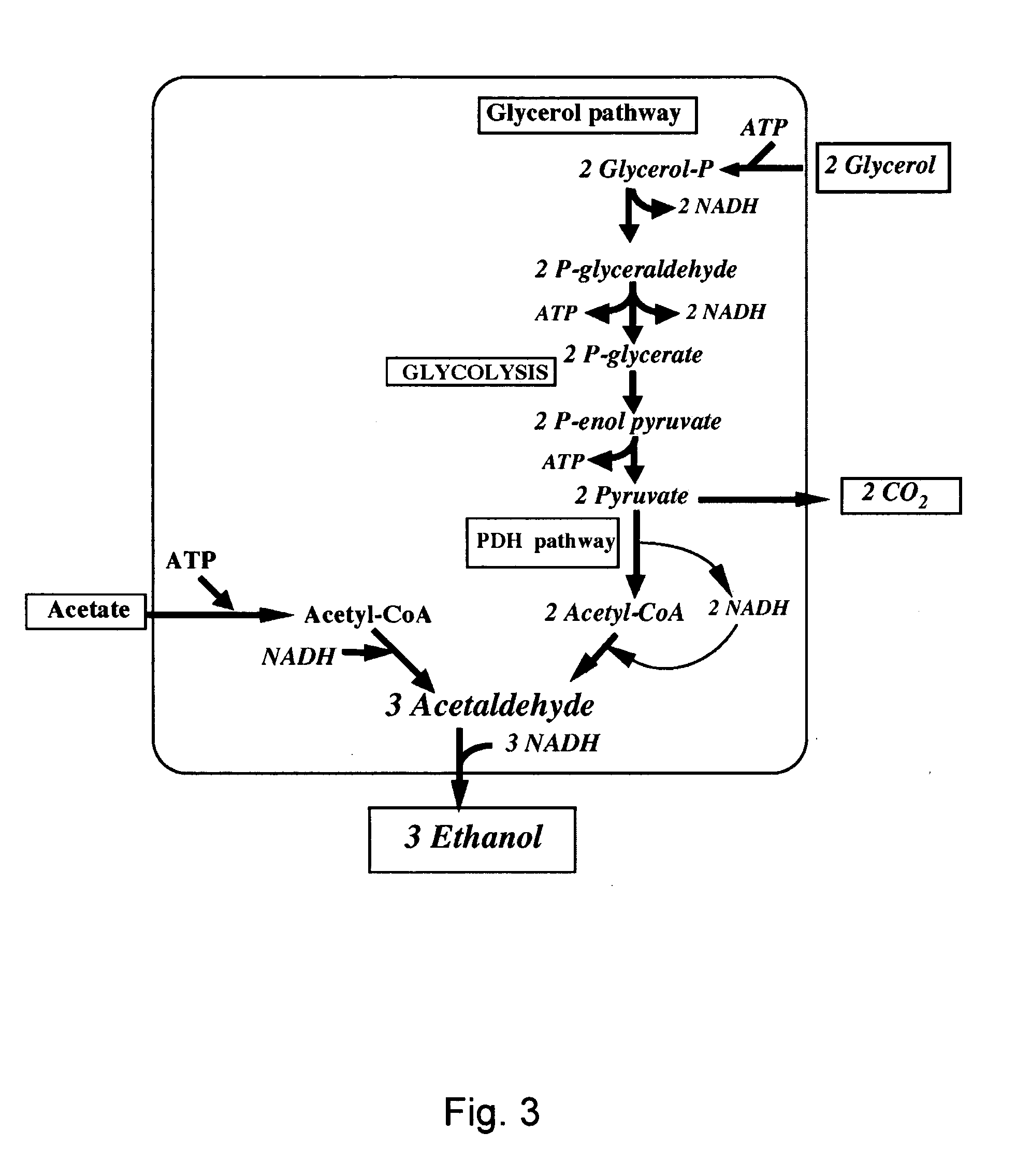Increased ethanol production by bacterial cells
a technology of ethanol production and bacteria, applied in the direction of oxidoreductases, biochemistry apparatus and processes, enzymes, etc., can solve the problems of insufficient pathway flux to recycle all, cellular redox imbalance and cell death, and process inability to be commercially viabl
- Summary
- Abstract
- Description
- Claims
- Application Information
AI Technical Summary
Benefits of technology
Problems solved by technology
Method used
Image
Examples
example
[0029]BCT25-H strain, which is a lactate dehydrogenase-deficient strain of Bacillus derived from strain LLD-R (constructed according to Example 3 of WO 2007 / 110606), was grown in 30 ml Sterilin bottles containing 10 ml of 2TY medium (tryptone 16 g, yeast extract 10 g, sodium chloride 5 g, and distilled water to 1000 ml. pH 7.0 adjusted with 20% w / v NaOH) with 56 mM of glucose and containing different concentrations of glycerol (54, 108 and 216 mM) at 65° C. and 200 rpm. The experiment was conducted such that the growth conditions were partially aerobic.
[0030]The growth studies showed that the addition of glycerol significantly improved the ethanol production while formate levels did not vary much (see table 1 and FIG. 4). Although a lesser amount of acetate was expected by the addition of glycerol, the slightly higher acetate levels obtained in this study are possibly due to the fact that the growth conditions were not strictly anaerobic and some of the acetate had been produced by ...
PUM
 Login to View More
Login to View More Abstract
Description
Claims
Application Information
 Login to View More
Login to View More - R&D
- Intellectual Property
- Life Sciences
- Materials
- Tech Scout
- Unparalleled Data Quality
- Higher Quality Content
- 60% Fewer Hallucinations
Browse by: Latest US Patents, China's latest patents, Technical Efficacy Thesaurus, Application Domain, Technology Topic, Popular Technical Reports.
© 2025 PatSnap. All rights reserved.Legal|Privacy policy|Modern Slavery Act Transparency Statement|Sitemap|About US| Contact US: help@patsnap.com



